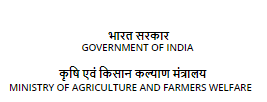ICAR-CIRCOT trapezoidal shaped rapid burning briquette-based crematorium
Background:
Wood based cremation is an ancient rite and practice in Hinduism since evolution of human civilization on the motherland earth. Traditional cremation requires about 350 kg firewood and substantial amount of ghee as 1 kg, 5 litres kerosene and 2 kg camphor per body. The firewood equivalent to 25-30 lakh fully grown trees is burnt annually in India for about 75 lakh cremations contributing to deforestation and global warming. Mostly, the traditional cremations are performed in open spaces, hence, the oxygen supply needed for firewood combustion is naturally drawn from the environment. Many a time, mostly due to low wind velocity, the availability of oxygen supply is insufficient for fuel combustion resulting into slow cremation process and incomplete burning, which results in black thick smoke formation and discharge of a large amount of hazardous air pollutants like CO, CO2, NOx, Volatile Organic Compounds (VOA), etc. during cremation process (Dube and Rawat, 2005). In addition, the uses of kerosene for fire initiation also leads to emission of a large quantity of air pollutants and smoke formation. Mostly during rainy seasons, due to scarcity of dry firewood, wet firewood is utilized during cremations leading to improper combustion and loss of significant amount of heat energy in steam formation. Hence, the time and fuel requirements in traditional firewood cremation using wet firewood is increased significantly. Also, the wet firewood burning increases air pollution as its burning produces much more smoke, releases more pollutants and release of small dust particles into the air as compared to dry wood burning. Crematoriums using electrical, diesel, gas, etc. energy as fuel have also been attempted as alternatives to wood-based cremations at several places in India. The closed chamber designs of these crematoriums do not allow performing traditional rituals like mukhangi and kapalkriya as mentioned in religious scriptures. Since, the last rites of a loved one are understandably a very sentimental issue, these non-traditional cremations are not much accepted by the society at large resulting in continuous uses of firewood for cremation of dead bodies even in the 21st century in India. Now a days, with greater emphasis on renewable energy, biomass briquettes have been extensively used as alternative to coal for firing of boilers and generation of heats in many industries (Dube and Rawat, 2013).
Technology details:
In order to provide an eco-friendly solution as well as to perform traditional Hindu rituals during cremations, the ICAR-CIRCOT, have developed briquette based eco-friendly, efficient and rapid burning green crematorium as an alternative to traditional fire wood-based cremation. Briquettes made from agricultural biomass like cotton stalk, sugarcane bagasse, groundnut and castor seed shells, rice husk and paddy straw etc. can be used as greener and renewable alternative for fire wood in cremation:
Briquettes are homogeneous, uniformly sized solid pieces of high bulk density produced by densification of agro-residues. The biomass briquette contains very little amount of moisture i.e. ?8% hence, it burns very efficiently and almost completely, resulting in fewer pollutants to escape into environment. Though, most of agro-residues can be converted into briquettes, which can be effectively used as fuel, the cotton stalk briquettes are preferred in many industries as boiler fuel due to its high bulk density, calorific values and less ash content. It is estimated that about 25 million tonnes of cotton stalk are generated every year in India. Most of the stalk produced is treated as waste though a part of it is used as fuel by rural masses. Hence, the promotion of cotton stalk briquettes as alternative to firewood has potential to increase farm income and promote rural industrialization:
Many local bodies attempted to use biomass briquettes as fuel for cremation of dead bodies in the traditional open crematoriums. However, it leads to large amount of smoke formation, discharge of pollutants, incomplete burning of dead bodies, increase in cremation duration, etc. It is primarily due to reason that the haphazardly oriented densely packed fine particles of briquettes do not allow air to percolate inside of briquettes unlike firewood combustion due to structured orientation of particles in firewood. When the methods and techniques, which are being successfully employed in industries for briquette firing in boilers studied, it was found that were provisions made to supply forced air draft in furnaces to cope up the additional air supply needed for proper and complete burning of briquettes. Hence, it was realized that a forced draft system would be needed for briquettes to be successfully used as accepted solid fuels alternative to firewood for cremation of dead bodies:
The ICAR-CIRCOT crematorium consists of compact trapezoidal shaped cage and a forced draft aeration system for supply of air for rapid initiation of fire and for enhanced combustion process. The forced air required for combustion during cremation process is supplied through single phase electric fan to an aeration chamber, which distributes air at the bottom and two-sides of cage through individual pipes having holes. This crematorium also can be used without forced draft aeration system and fire wood can also be used in place of briquettes.


